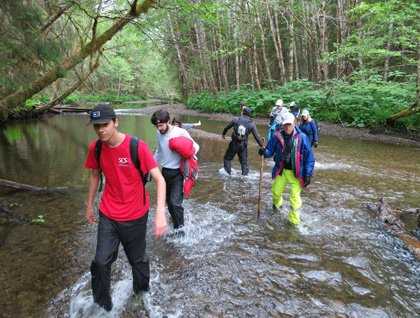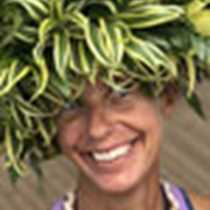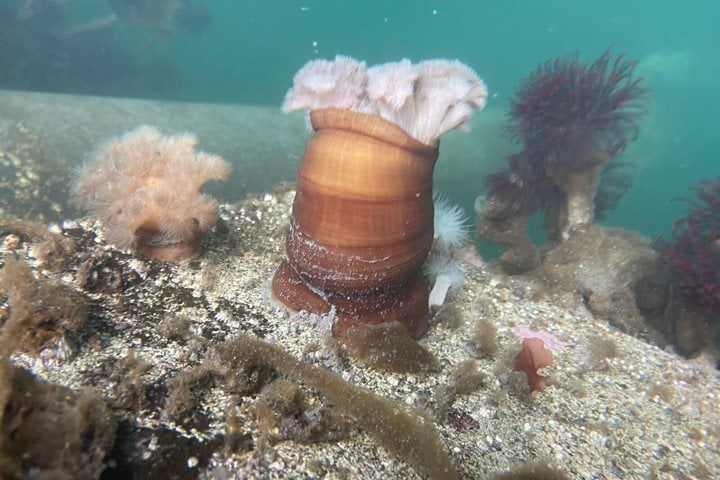This morning National Geographic Sea Lion awoke to a more typical overcast Southeast Alaskan sort of day. With slight precipitation in the air we prepared ourselves for the outings of the morning after another delicious meal. Landing on the beach at Pavlof Harbor at low tide exposed us to some of the richness of these waters so easily overlooked as we travel on the surface. We have been so fortunate to have the incredible video (and narration) of our undersea specialist Paul to share with us what lies beneath and the wonderful complexities of lives not often exposed.
Dropping our life jackets up on higher ground we launched on our respective hikes exploring the beautiful forest of Chichagof Island. Looking across the small bay we could see old pilings, a relic from the early salmon industry. Once a saltery, and later a cannery, most of these salmon streams would have had such small operations to the detriment of the fish run. In 1907 the invention of the fish trap led to a quick demise of this precious resource as, spanning the entire river, the trap caught the entire run.
One of the motivators behind statehood was the state taking control of fisheries and fish traps were immediately abolished in 1959. Scaling a small face aside the waterfall we looked down onto a fish ladder built in the 1930’s to help enhance the fish population. Further up the trail, along the edge of the stream, we found the impressive abode of Castor canadensis, North America’s largest rodent. A valuable commodity the search for beaver was the result of much of the early exploration of North America as their pelts were the single most valuable commodity through the early 1800's. Close to the lodge we also spotted bear tracks and a bear scratching tree with bear hair glued to the sap. Up at beautiful Pavlof Lake a wood frog was caught and we learned their strategy of surviving the winter is to freeze solid.
Intrepid long hikers explored over root and dale through tall wet grasses and through the woods as they circumnavigated the lake. Beautiful meadows along the way were covered in flowers, including the carnivorous Butterwort (Pinguicula vulgaris). A red-legged frog was seen on the far side of the lake (introduced to the island in 1982) and not soon after that, we discovered bear tracks that looked fairly fresh. The wind continued to build throughout the morning and as we set out into Chatham Strait it was blowing 25+ knots. Exploring Basket and Hood Bays by ship, we continued our never-ending search for wildlife.







